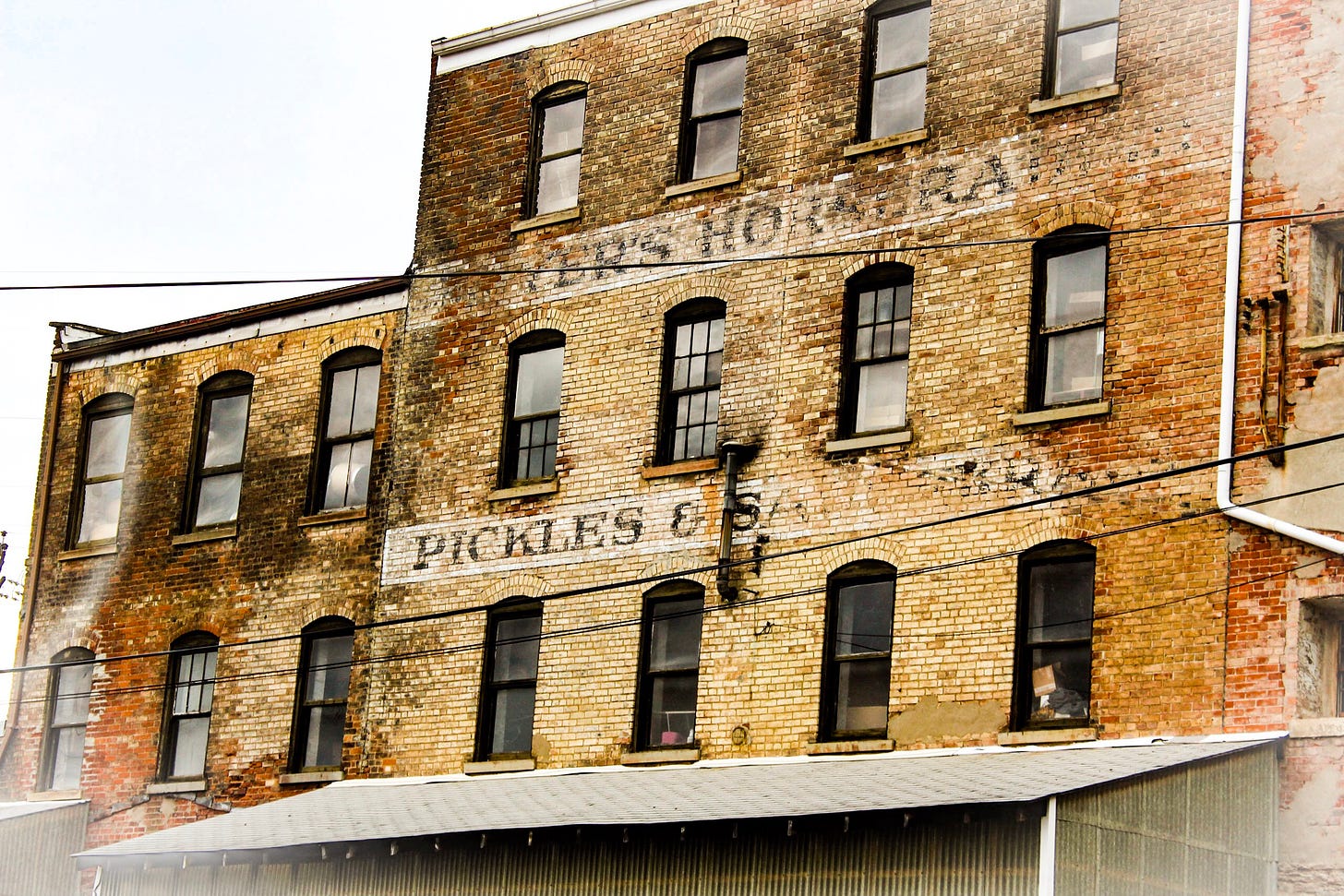Horseradish, Pickles, and Sauerkraut
I miss growing horseradish. Processing it was a little like setting off a tear gas grenade in your kitchen, pungent to the point of eyes watering and coughing helplessly. A few times I had to just clear out and let some open windows do their trick after I'd run a peeled root through the food processor. But it's dead simple to put up horseradish. Just grate or grind it very fine (maybe outside, if you can manage that!) and pack it into a jar, then put in enough vinegar to come up to just under the lid. Cap, and refrigerate. Never heat horseradish - heating it breaks down the chemistry that makes it so delightfully pungent and spicy. Actually, making it without vinegar would also be an issue, as the vinegar stops the chemical reaction you start by breaking open cells in grinding, which creates allyl isothiocyante. There's that sulfur! The key to getting familiar with the chemistry of food is in the names. When you see that 'thio' in the word, that's a sulfur. The smell of rotten eggs, onions, garlic, and yes, horseradish.
The reason I'm currently not growing horseradish is that first I have to build a prison for it. Speaking of words within words, when you see 'horse' in a common name for a plant, it means the plant is large, aggressive, and weedy. Which this brassica definitely is all three of. The massive roots plunge feet into the ground. When harvesting I used to wind up with only the top parts, the depth was wrapped around New England rocks and inaccessible. Here in rock-free Ohio I boggle at the capacity for the taproots. Like I said, I need to make a maximum security plant prison before I put any in my garden. Like for mint.
Which brings us, in a way, to pickles. Pickling isn't just for cucumbers. Any garden harvest can be paired with vinegar as a preservative and be called a pickle. Horseradish, cucumbers, cabbage... and other veggies. Now, that's a very simplistic look at the process. I have neither the time nor the space to really dig into what pickling is, because it's a complex interaction of the acid, microbes, temperature, and time. Personally I've never succeeded consistently with crock pickles - the sort you make in a big stoneware vat, and let sit fermenting in the dark root cellar for weeks and months. I've had good luck with hot pack pickles, which although they may not be as complex in flavor, are usually pleasantly crisp and tangy. I've even experimented with the chemical reaction of lime in my sweet pickles, and learned that too much of a good thing makes for woody pickles. Not yummy. Pickling carrots, cauliflower, cucumbers, peppers, green beans... dangit. I really want to get my garden on next summer! But I haven't got time to can like I used to.
And of course, then there is sauerkraut. I started writing this post because during the tour of Cincinnati, one of the places Mark took us was an old factory where they made all the delicious accouterments you'd expect to find on a typical German hausfrau's table - because the heritage of the city is heavily German. On the side of the warm brick building, there remains the ghost of a sign, only partly legible, touting their wares. I've never made kraut myself. It's a pickle, sort of, but a fermented one. Back in the days before refrigeration, it was a healthy way to keep veggies long into the winter, and the vitamin C content of homemade vinegars helped stave off scurvy when there was nothing green to eat and the fruit was precious and scarce. Some people can't stand the 'sour' of it, but personally I enjoy it alongside pork, and with the sweetness of apple slices fried up alongside, it is perfection.

Ghost sign is all that lingers of what must have been a powerful smell.




